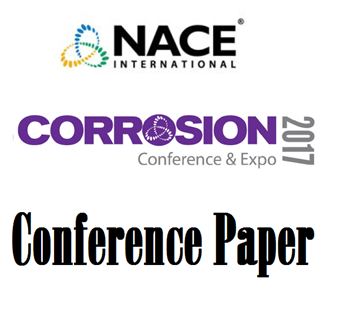Search
Chemical Inhibitors
View as
Sort by
Display
per page
TM0113-2013-SG "Evaluating the Accuracy of Field-Grade Reference Electrodes"
Product Number:
21265-SG
ISBN:
1-57590-261-3
Publication Date:
2013
$109.00
TM0193-2016-SG, Laboratory Corrosion Testing of Metals in Static Chemical Cleaning Solutions at Temperatures Below 93 °C (200 °F)
Product Number:
21223-SG
ISBN:
1-57590-104-8
Publication Date:
2016
$109.00
TM0194-2014-SG (Spanish), “Monitoreo en Campo del Crecimiento Bacteriano en los Sistemas de Gas y Petróleo”
Product Number:
21266-SG
ISBN:
1-57590-192-7
Publication Date:
2014
$179.00
TM0194-2014-SG, Field Monitoring of Bacterial Growth in Oil and Gas Systems
Product Number:
21224-SG
ISBN:
1-57590-192-7
Publication Date:
2014
$109.00
TM0197-2010, Laboratory Screening Test to Determine the Ability of Scale Inhibitors to Prevent the Precipitation of Barium Sulfate or Strontium Sulfate, or Both, from Solution (for Oil and Gas Production Systems)_
Product Number:
21228-SG
ISBN:
1-57590-040-8
Publication Date:
2010
$179.00
TM0197-2010-SG"Laboratory Screening Test to Determine the Ability of Scale Inhibitors to Prevent the Precipitation of Barium Sulfate or Strontium Sulfate, or Both, from Solution (for Oil and Gas Production Systems)" Redline<br><em>Redline versions of standards show the changes to the current edition of the standard since the last edition. Changes are shown in underline and strikeout. With the Red
Product Number:
21262-SG
ISBN:
1-57590-040-8
Publication Date:
2010
$109.00
TM0374-1990, Laboratory Screening Tests to Determine the Ability of Scale Inhibitors to Prevent the Precipitation of Calcium Sulfate and Calcuim Carbonate From Solution (For Oil and Gas Production Systems)
Product Number:
53023-HD1990
Publication Date:
1990
$179.00
TM0374-2016-SG, Laboratory Screening Tests to Determine the Ability of Scale Inhibitors to Prevent the Precipitation of Calcium Sulfate and Calcium Carbonate from Solution (for Oil and Gas Production Systems)
Product Number:
21208-SG
ISBN:
1-57590-124-2
Publication Date:
2016
$109.00
Two-Way Application of Corrosion Inhibitor in Gas and Condensate Field
Product Number:
51320-14398-SG
Publication Date:
2020
$20.00
Understanding Insulation Chemistry Proven to Inhibit Corrosion Under Insulation (CUI)
Product Number:
51317--8876-SG
ISBN:
8876 2017 CP
Publication Date:
2017
$20.00
Use of a Methodological Panel for Microbial Diagnostics Biocide Selection and Application in an Oil Shale Field
Product Number:
51317--9019-SG
ISBN:
9019 2017 CP
Publication Date:
2017
$20.00












